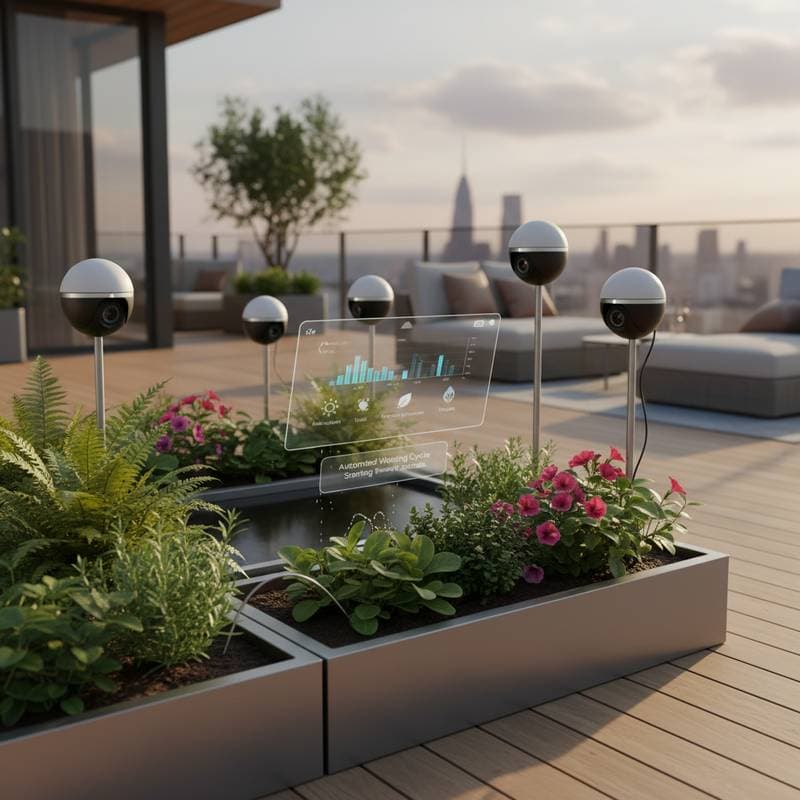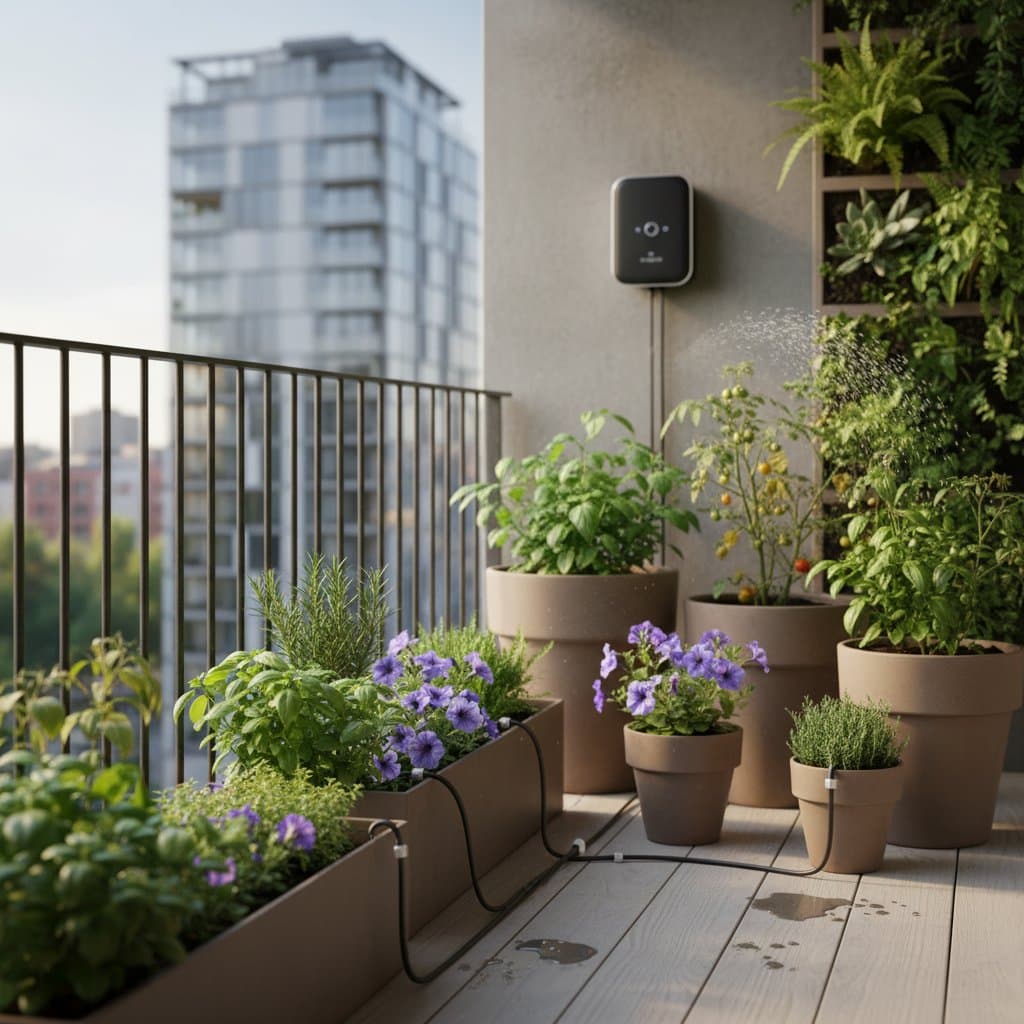Vertical Gardening: Drought-Proofing Your Deck Space
Vertical gardening offers a smart solution for urban dwellers facing limited space and water restrictions. By stacking plants upward along walls or railings, you create a thriving garden that conserves water, maximizes sunlight, and withstands dry conditions. This guide provides detailed steps to build a resilient vertical deck garden using drought-tolerant techniques.
Materials Needed
Gather these essentials before starting. Select durable items suited to outdoor exposure.
- Vertical frame: Modular metal or treated wood panel, at least 4 feet (1.2 meters) tall, with slots for planters.
- Planters: Lightweight plastic or fabric pots, 6 to 8 inches (15 to 20 centimeters) in diameter, stackable or hangable.
- Drainage components: Mesh screens to cover holes and prevent soil loss.
- Soil amendments: Perlite or vermiculite for aeration.
- Fasteners: Stainless steel screws, hooks, or brackets for secure attachment.
- Irrigation supplies: Drip tubing, emitters, and timer if automating.
- Protective sealants: Weatherproof coating for wood or metal surfaces.
- Optional reservoir tray: Shallow pan to catch runoff water for reuse.
Steps to Build Your Vertical Garden
Follow these steps in sequence. Proceed carefully to ensure stability and efficiency.
Step 1: Plan the Layout
Sketch a diagram of your deck, including measurements and sun patterns. Drought-tolerant plants require a minimum of six hours of direct sunlight daily. Identify the attachment point on a sturdy wall or railing, maintaining 12 inches (30 centimeters) of clearance from the floor to avoid moisture accumulation.
Step 2: Build or Install the Frame
Construct or assemble the frame according to manufacturer instructions. For wooden frames, apply an outdoor-grade varnish sealant and allow 24 hours for drying. Fasten with corrosion-resistant screws, verifying level placement. Confirm the structure supports 10 to 20 pounds (4.5 to 9 kilograms) per planter when filled and watered.
Step 3: Attach Planters
Begin at the base and progress upward for stability checks. Use hooks or brackets rated for double the expected weight. Verify each planter features drainage holes approximately one-quarter inch (6 millimeters) in diameter to facilitate excess water escape.
Step 4: Prepare the Soil Mix
Mix two parts potting soil, one part compost, and one part perlite. This combination retains necessary moisture while promoting quick drainage. Fill containers to three-quarters capacity, reserving space for a mulch layer.
Step 5: Add Plants
Select species adapted to your local climate and deck conditions; refer to the plant recommendations section. Position taller varieties at the upper levels to provide natural shade below. Firm the soil around roots securely and water thoroughly until moisture reaches the lower tiers.
Step 6: Set Up Watering Lines
For drip systems, position emitters at each pot with flow rates of 0.5 to 1 gallon (1.9 to 3.8 liters) per hour. Fasten tubing to the frame using clips. When hand-watering, apply slowly from the top to encourage runoff distribution. Steer clear of overhead methods that lead to evaporation loss.
Step 7: Mulch and Seal
Apply one inch (2.5 centimeters) of organic mulch to each pot surface to minimize water loss. Clear any displaced soil from the deck and confirm unobstructed drainage. Seal joints around screws and walls to protect adjacent surfaces from moisture intrusion.
Step 8: Test and Adjust
Initiate a full watering cycle and monitor retention. Aim for soil that remains mildly moist for two to three days. If upper sections dry excessively, incorporate a shade cloth or modify plant arrangement for better coverage.
Safety Considerations
Prioritize caution during construction and use.
- Wear protective gloves when working with soil or tools.
- Stabilize ladders or platforms before accessing higher planters.
- Distribute weight evenly to avoid straining railings or walls.
- Position electrical elements away from potential wet zones.
Common Issues and Solutions
Address problems promptly to maintain garden health.
Uneven Moisture Distribution
Upper plants may desiccate while lower ones remain saturated. Modify emitter outputs or opt for smaller upper pots. Employ a soil moisture probe for precise monitoring.
Algae or Mold Development
Poor drainage or insufficient light contributes to growth. Rinse affected containers with a vinegar solution, dry completely, and refresh with enhanced soil mix.
Wilting Under Regular Watering
Compacted roots often cause this symptom. Aerate the soil carefully, inspect for decay, and repot as needed with reduced initial watering.
Frame Instability in Wind
Reinforce with additional brackets or ground anchors. For structures exceeding six feet (1.8 meters), secure to the deck base.
Ongoing Maintenance
Routine attention sustains the garden with minimal effort.
- Water one to two times weekly, adjusting for weather.
- Prune spent foliage biweekly to enhance circulation.
- Apply slow-release fertilizer quarterly.
- Clean planters monthly to eliminate residue buildup.
Examine fasteners seasonally and replace corroded components immediately.
Off-Season Storage
In colder climates, protect plants and materials.
Relocate sensitive varieties indoors before frost. Choose pots easy to maneuver when empty. Stack containers neatly and store irrigation components in a protected area. Seal unused soil to shield from dampness.
Cost and Time Estimates
A setup with 12 to 18 planters typically ranges from 150 to 300 dollars, covering frame, soil, and initial plants. Solo assembly requires about four hours; assistance shortens it to two. Weekly upkeep demands 10 to 15 minutes.
Reduce expenses through recycled pots, rainwater harvesting, and plant propagation. Long-term water conservation frequently recoups upfront costs.
Professional Assistance
Seek expert help for complex installations.
Engage a contractor if deck integrity is uncertain. They assess load capacities and recommend reinforcements. For integrated irrigation, involve a plumber to install backflow safeguards.
Key inquiries for professionals:
- What load limit exists per square foot on the deck?
- Which attachment preserves siding or railing condition?
- Is timer-controlled drip feasible?
- What sealing measures ensure weather resistance?
Adapting to Seasons
Summer Conditions
Irrigate in early morning to limit evaporation. Monitor soil during extreme heat. Use light-reflective mulch to moderate root temperatures.
Winter Preparations
Cut back watering to biweekly as growth diminishes. Shelter frost-sensitive plants. Check for freeze-induced cracks in containers.
Wet Weather Management
Elevate or drain reservoir trays to avoid stagnation. Thin dense growth for better ventilation. Store excess rain in sealed containers for dry periods.
Recommended Plants
Opt for resilient varieties with water-efficient traits like succulent leaves or reflective surfaces.
Full Sun, Excellent Drainage:
- Sedum (Autumn Joy, Dragon’s Blood)
- Lavender
- Rosemary
- Ice Plant
- Gaillardia (Blanket Flower)
Partial Shade, Balanced Moisture:
- Thyme
- Echeveria
- Coreopsis
- Blue Fescue Grass
- Oregano
Shade-Tolerant, Humidity-Retaining:
- Ferns (Maidenhair, Japanese Painted)
- Creeping Jenny
- Sweet Alyssum
- Mosses for filler areas
Allow 6 to 8 inches (15 to 20 centimeters) between plants. Refresh underperformers annually.
Essential Strategies
Vertical designs enable water recycling from upper to lower levels. Pair resilient plants with precise irrigation for efficiency. Strategic shading cools the deck and curbs moisture loss. Consistent checks and trims ensure longevity.
Getting Started
Initiate your project with these steps:
- Diagram the deck layout, noting optimal sunny spots.
- Source stackable containers and add drainage.
- Select three hardy plants for a trial row to gauge performance.


